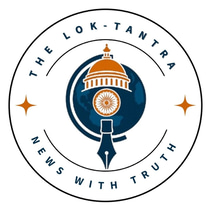A Dark Day in Paradise
On April 22, 2025, the serene and picturesque landscape of Baisaran Valley near Pahalgam in Jammu and Kashmir was shattered by an act of unthinkable horror. In a brutal terrorist attack that targeted unarmed civilians, at least 26 tourists were killed, including 25 Indian nationals and one Nepalese citizen. The massacre also left 17 others wounded and marks the deadliest assault on civilians in India since the 2008 Mumbai attacks.
The Anatomy of Terror: Execution of the Attack
According to eyewitnesses and police reports, three heavily armed gunmen disguised in traditional attire infiltrated the bustling tourist camp in Baisaran Valley. With military precision, they segregated the gathered tourists—almost a thousand in number—from local workers and methodically separated men from women and children. What followed was a horrifying selection process, where men were reportedly interrogated and some executed for failing to recite Islamic verses. Survivors recounted tales of fear, fortitude, and miraculous escapes, with some hiding in tents and others surviving by reciting religious texts.
A group calling itself The Resistance Front (TRF) claimed responsibility, framing the attack as a strike against Indian intelligence operatives embedded among tourists—an assertion that appears baseless and deeply propagandist. Indian intelligence and security agencies, however, suspect the orchestration of more well-known Pakistan-backed terrorist groups like Lashkar-e-Taiba (LeT) and Hizbul Mujahideen.
Sectarian Undercurrents and the Two-Nation Theory
The timing and nature of this attack are particularly telling in the context of a recent speech by Pakistan's Army Chief, General Asim Munir. Reasserting the controversial and widely discredited 'two-nation theory', Munir highlighted the alleged irreconcilable differences between Hindus and Muslims, labeling Kashmir as Pakistan’s 'jugular vein'. Such incendiary rhetoric not only revives dangerous communal binaries but may also serve as a clarion call to extremist elements.
The attackers’ targeting of Hindu tourists—and their selective sparing of those able to demonstrate Muslim identity—lends credence to the theory that this was more than a terror strike. It was an ideological assault aimed at stoking communal divisions and undermining the secular fabric of Indian society.
An Attack Timed for Maximum Impact
This act of terror did not occur in isolation. It coincided with two significant diplomatic events: the official visit of U.S. Vice President J.D. Vance to India, accompanied by his family, and Indian Prime Minister Narendra Modi’s strategic visit to Saudi Arabia. The attack’s choreography appears aimed at multiple objectives: destabilizing the region, projecting India as unsafe for international diplomacy, and disrupting India’s outreach to both Western and Gulf partners.
The optics could not be more strategic. At a time when India was projecting itself as a stable, investment-worthy democracy, this atrocity sent shockwaves across diplomatic and economic corridors.
India at a Strategic Crossroads: The Way Forward
India's response, while swift and solemn—with PM Modi cutting short his Saudi visit and Home Minister Amit Shah rushing to Kashmir—must now evolve beyond symbolic gestures. The options before India are grave and consequential:
1. Revisiting the PoK Equation: With mounting evidence that Pakistan-occupied Kashmir (PoK) has become a hub for terror launch pads, a growing school of thought in India advocates for its reoccupation. While such an action would be fraught with military, diplomatic, and humanitarian risks, proponents argue that dismantling terror infrastructure at its roots is the only long-term solution.
2. Diplomatic Isolation of Pakistan: India must reinvigorate efforts to isolate Pakistan on the global stage by presenting irrefutable evidence of state-sponsored terror. Engagement with multilateral platforms like the UN, FATF, and the G20 should be intensified.
3. Enhanced Counterterrorism Infrastructure: Domestically, this attack highlights vulnerabilities in India's intelligence apparatus. An overhaul is imperative—integrating artificial intelligence, satellite surveillance, and better human intelligence in hostile regions.
4. Strengthening Internal Cohesion: The attackers aimed to fragment Indian society along religious lines. A robust societal response—emphasizing secularism, interfaith solidarity, and national unity—is the strongest repudiation of their agenda.
Drawing Parallels: The Hamas Attack on Israel
The Pahalgam massacre evokes unsettling parallels with the October 7, 2023, Hamas attack on Israel, which killed over 1,100 people in a coordinated ambush. Both acts targeted civilians with chilling brutality, both were carried out by ideologically-driven Non-State actors, and both served as calculated provocations aimed at eliciting overwhelming military responses.
However, India’s geopolitical constraints differ significantly from Israel’s. Unlike Israel, which commands unequivocal Western support, India operates in a more complex multipolar world. Any military escalation with Pakistan could have cascading effects on its economic aspirations and regional stability.
The Moral Imperative and National Security Doctrine
India’s national security doctrine must now confront a fundamental question: Can a democracy coexist with a neighbor that continuously exports terror as a strategic tool? The moral imperative to protect its citizens may compel India to abandon decades of strategic restraint.
But any action must be calibrated. A hasty military incursion into PoK without broad international backing could alienate allies, especially in the West and Middle East. Instead, India could consider covert operations, targeted sanctions, and cyber offensives as part of a new-age doctrine of hybrid warfare.
Conclusion: From Grief to Resolve
The Pahalgam massacre is a national tragedy, but it must also serve as a turning point. The attack was not just on individuals but on the idea of India itself—its pluralism, its democracy, and its aspiration to be a global power. The path forward must be guided by moral clarity, strategic foresight, and an unflinching commitment to justice.
India today stands at a crossroads. One path leads to inaction and cyclical grief. The other, though fraught with danger, leads toward reclaiming security, dignity, and peace. The shadows over the valley must be dispelled not only with force but with vision. And that vision must now begin to take shape.
